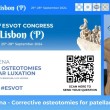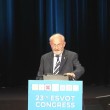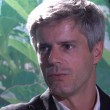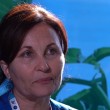DVM 2006 University of California-Davis
DACVS-SA 2012
DECVS 2013
DVM 2006 University of California-Davis
DACVS-SA 2012
DECVS 2013
Experience immediately following Graduations: After graduation from veterinary school I completed a rotating internship at the University of Pennsylvania Ryan Veterinary Teaching Hospital in Philadelphia. Immediately following my internship, I returned to UC Davis for a residency in small animal surgery. After 3 years in Davis California, I moved to Washington State and started work at the Puget Sound Veterinary Referral Center which is a private practice in the city of Tacoma.
Experience since the above until now: My husband and I became interested in living in Europe and by chance I came in contact with Lennart Sjöström, DVM, DECVS who invited me to visit at Strömsholm Small Animal Referral Hospital in Sweden. I wasn´t long after that visit that we moved with 3 dogs and 2 cats to Sweden. Since then I have worked as a staff surgeon at Strömsholm.
G.S-S How old were you when you decided that you wanted to become a veterinarian and why?
B.N I have always known that I wanted to work with animals but it wasn´t until upper secondary school (gymnasium) that I knew I wanted to be a veterinarian. It was the exposure to biology and chemistry in combination with anatomy classes that really sparked my passion for veterinary science. I truly enjoyed the challenges that science offered and I thrived, and still do, in a problem solving setting. Since then, I was always focused on achieving my goal in attaining a degree in Veterinary Medicine.
G.S-S. Did one particular individual influence you decision?
B.N My mother and father indirectly influenced me by always encouraging to follow my dreams. My dad was a carpenter so I spent a lot of time in his workshop as a child building various projects. I guess my orthopaedic career really started there! My parents also fostered my independent streak which led me to move to the United States as a young adult where I lived for 20 years prior to returning to Sweden.
G.S-S. During your orthopaedic career to date, have you designed or used any particular modifications to current orthopaedic techniques? Ideas of which you are particularly proud?
B.N At this point in my career I cannot take claim to development or modification of an orthopaedic technique. I do find that challenges in surgery always spark fun discussions regarding modifications to instruments and techniques. Who knows if these discussions will make it past the surgical suite.
G.S-S What do you think will be the likely new ideas, systems ,or materials in the next ten years that will be adopted by Veterinary Orthopods, in both the Small and Large animal field?
B.N It is an exciting period with continued progression in science and development of new surgical materials and techniques! I think we will see more research and further development involving stem cell therapy and its application in treatment of muskuloskeletal disease. I would also like to see the development of better genetic screening with regards to elbow dysplasia. Currently, we perform approximately 2-4 elbow arthroscopies per day on young purebred dogs and many of these dogs do not have any remarks on their radiographs used to screen for elbow dysplasia. I am also seeing more and more use of orthotics in Sweden but there is still room for growth in this field with regards to development of better products and stronger materials. Another area of development that I hope to see this coming decade pertains to biodegradable orthopedic implants and development of veterinary orthopedic biodegradable implants at a reasonable cost.















